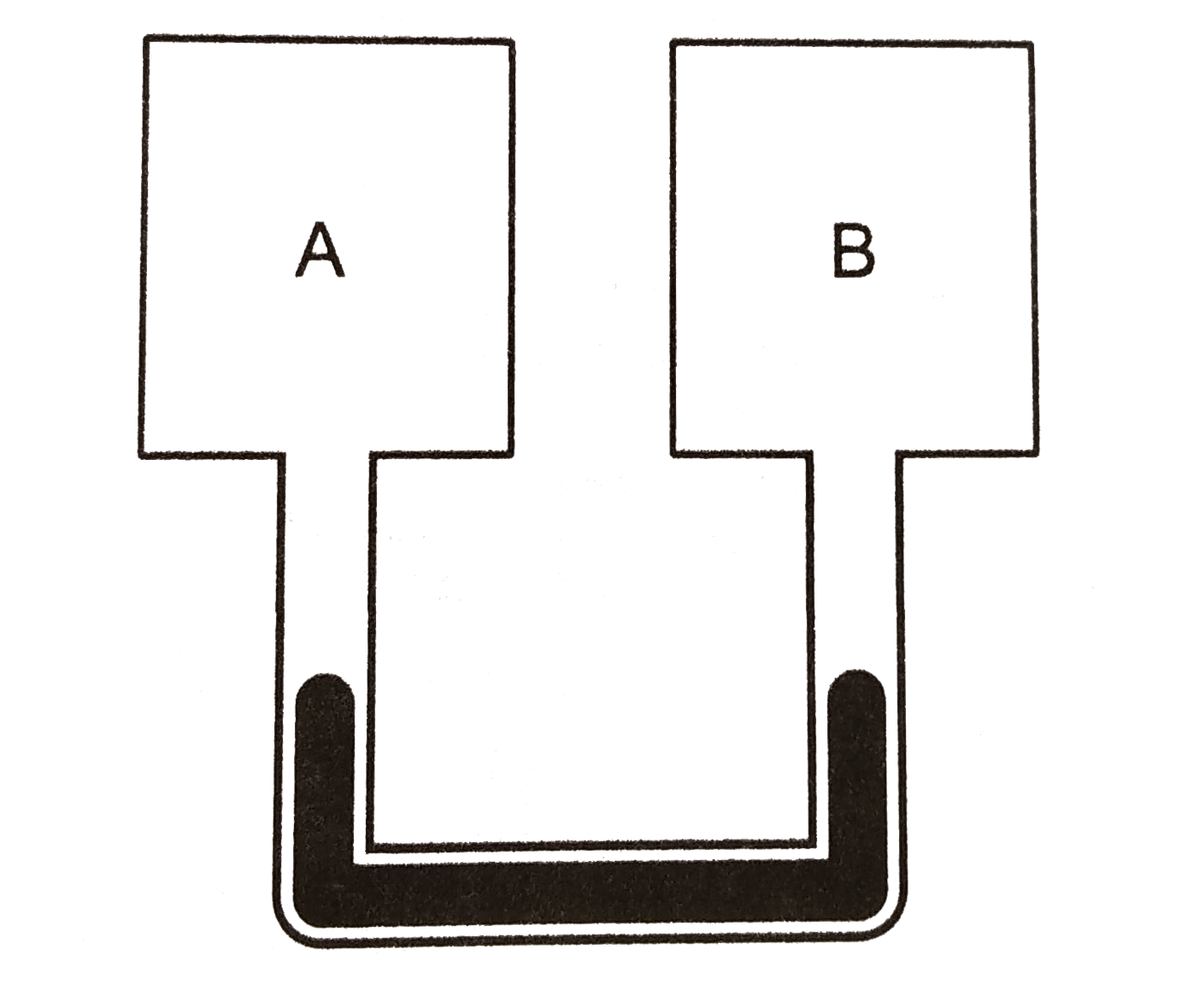Figure shows two rigid vessels A and B, each of volume 200cm3 containg an ideal gas (Cv=12.5JK−1mol−1). The vessels are connected to a manometer tube containing mercury. The pressure in both the vessels is 75 cm mercury and the temperature is 300k. (a) (5−0J) of heat is supplied to the gas in the vessels.(b) (10J) to the gas in the vessels B. Assuming no appreciable transfer of heat from A to B calculate the dufference in the heights of mercury in the two sides of the manometer. Gas constant (R=8.3JK−1mol−1)

V=200cm3,Cv=12.5J/mol−K,
T=300K,P=75cm.
(a) No. of moles of gases in each vessels,
n=PVRT
=75×13.6×980×2008.3×107×300
=0.008
(b) Heat is supplied to the gas but dV=0
So, dQ=dU
implies 5=nCvdT
implies 5=0.008×12.5×dT
implies dT=50 for (A)
Since PT=PATA
implies 75300=PA0.008×12.55
=12.5 cm of Hg
again PT=PBTB (For container B)
implies 75300=PB0.008×12.510
PB=25 cm of Hg.
Mercury moves by a distance
PB−PA=25−12.5=12.5 cm.
Topper's Solved these Questions
Similar Questions
There are 4×1024 gas molecules in a vessle at 50K temperature. The pressure of the gas in the vessel is 0.03atm. Calculate the volume of the vessel.
View SolutionA vessel is filled with a gas at a pressure of 76 cm of mercury at a certain temperature. The mass of the gas is increased by 50% by introducing more gas in the vessel at the same temperature. Find the resultant pressure of the gas.
View Solution
Knowledge Check
Two vessels of the same volume contain the same gas at same temperature. If the pressure in the vessels is in the ratio of 1 : 2, then
Athe ratio of the average kinetic energy is 1 : 2Bthe ratio of the root mean square velocity is 1 : 1Cthe ratio of the average velocity is 1 : 2Dthe ratio of number of molecules is 1 : 2A closed vessel contains some gas at a given temperature and pressure. If the vessel is given a very high velocity, then the temperature of the gas
AincreasesBdecreasesCmay increase or decrease depending upon the nature of the gasDdoes not changeA rigid vessel of volume 0.50m3 containing H2 at 20.5∘C and a pressure of 611×103 Pa is connected to a second rigid vessel of volume 0.75m3 containing Ar at 31.2∘C at a pressure of 433×103 Pa. A value separating the two vessels is opened and both are cooled to a temperature of 14.5∘C. What is the final pressure in the vessels?
A2×105B3.22×105 PaC4840 paD4.84×105 Pa
A vessel is filled with a gas at a pressure of 76 cm of mercury at a certain temperature. The mass of the gas is increased by 50% by introducing more gas in the vessel at the same temperature. Find the resultant pressure of the gas.
View SolutionA gas is filled in a vessel at a certain temperature and at a pressure of 80cm of Hg. At the same temperature, more gas is filled in the vessel so that its mean increases by 60%. Determine the resultant in the vessel.
View SolutionTwo closed vessels of equal volune contain air at 105kPa, 300K and are connected through a narrow tube. If one of the vessels is mow maintained at 300K and the other at 400K, what will be the pressure in the vessels?
View SolutionThe gas in a vessel is subjected to a pressure of 20 atmosphere at a temperature 27∘C. The pressure of the gas in the vessel after one half of the gas is released from the vessel and the temperature of the remainder is raised by 50∘C is
View SolutionA vessel containing 9 litres of an ideal gas at 760mm pressure is connected to an evacuated 9 litre vessel. The resultant pressure is
View Solution
